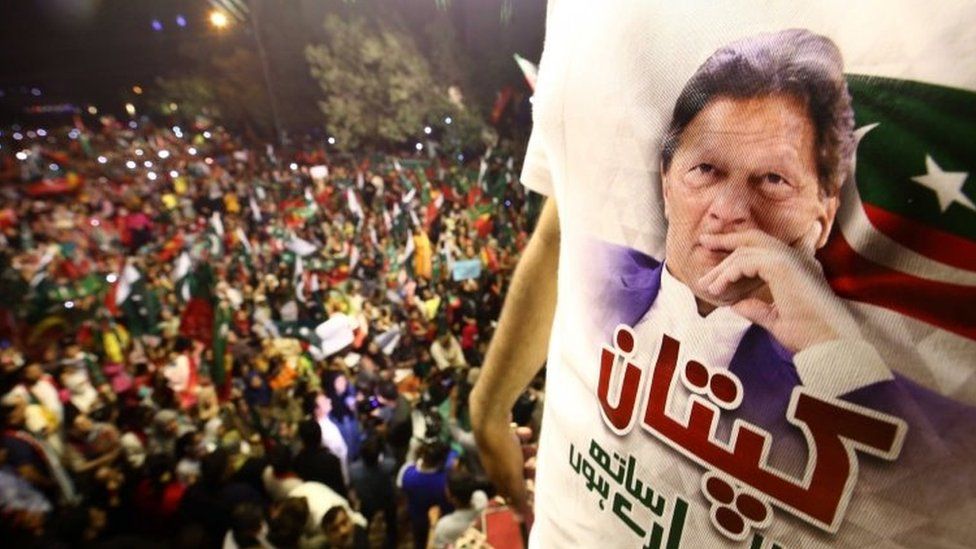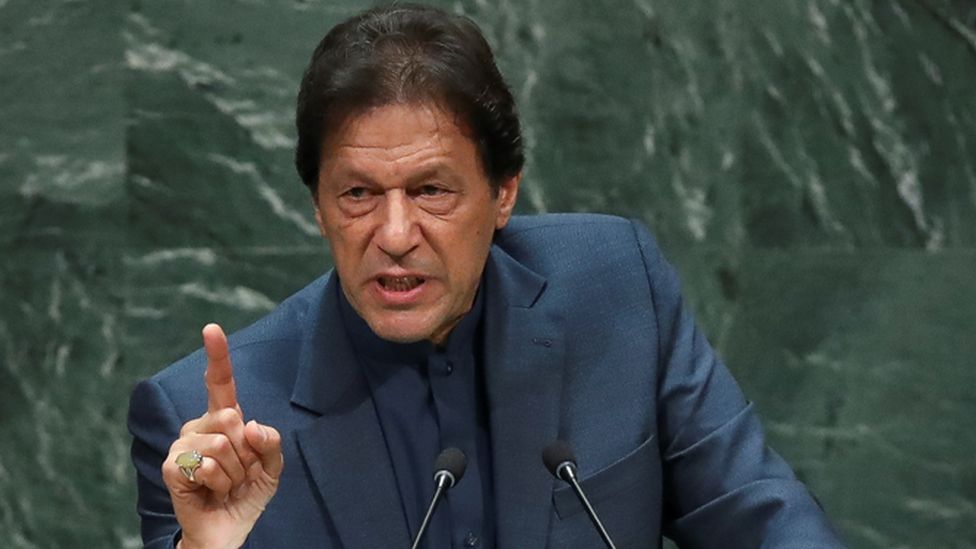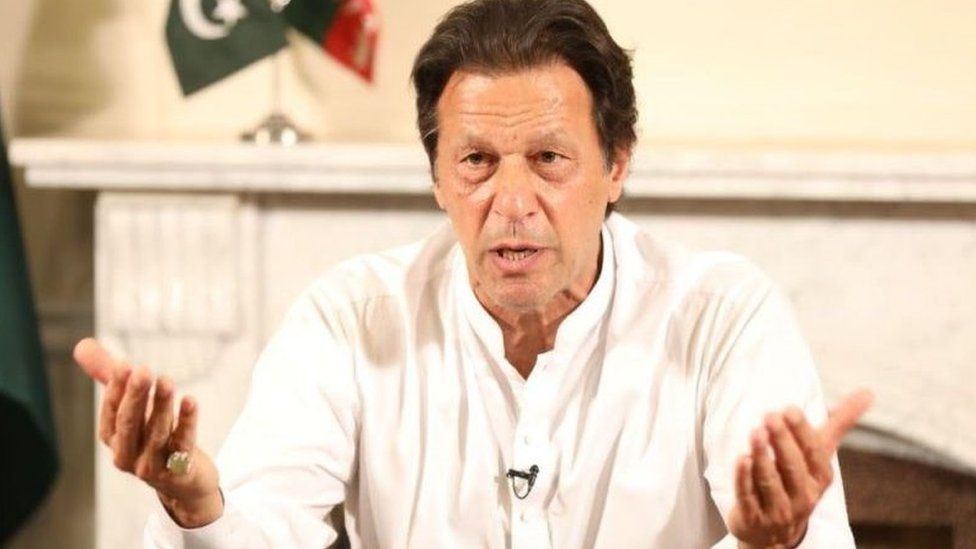
IMAGE SOURCE, EPA Image caption, Shehbaz Sharif (centre) led an opposition alliance to vote Imran Khan out
The opposition coalition leader – who had worked to depose Mr. Khan – won the support of a majority in parliament.
Shehbaz Sharif will now form a new government that can remain in place until elections are due in August 2023.
Mr. Khan, 69, was voted out after days of high political drama.
He had attempted to block a previous attempt to bring a no-confidence motion against him by dissolving parliament and calling for a snap election.
However, the country’s Supreme Court upheld an opposition petition that his actions were unconstitutional and ordered the no-confidence vote to go ahead.
Rival candidate Shah Mahmood Qureshi had announced the Pakistan Tehreek-e-Insaf party led by Mr. Khan was boycotting the parliamentary vote and staged a walkout. The former PM and most of his party’s MPs resigned from their seats ahead of the vote.

What do we know about Pakistan’s new PM?

Shehbaz Sharif, 70, served as chief minister of Punjab, Pakistan’s most populous province, prior to Imran Khan coming to power in 2018. Mr. Sharif, who leads the Pakistan Muslim League Nawaz (PMLN), had a reputation for efficiency and being hardworking, and is credited with making significant infrastructure improvements.
Many ruefully contrasted him with his successor, Usman Buzdar, who was widely ridiculed as under-qualified and incompetent. Anger at Imran Khan’s refusal to replace Mr. Buzdar is one reason cited by numerous analysts for the emergence of a rift between Mr. Khan and his previously close ally, the Pakistani military.
Shehbaz Sharif has always been in the shadow of his older brother, Nawaz Sharif, who served as PM on three occasions. Whereas Nawaz openly criticised the army following his removal from power, however, Shehbaz has favoured reconciliation with the “establishment”.
Like his brother, Shehbaz has also faced corruption allegations and has spent periods of time in jail during Mr. Khan’s tenure. He has not been convicted of an offence and maintains the allegations are politically motivated. Shehbaz Sharif’s son, Hamza, is hoping to follow in his father’s footsteps and become the next chief minister of Punjab.

Shehbaz Sharif submitted his candidacy for the top post on Sunday, before winning 174 votes in parliament the following day – two more than a simple majority of lawmakers.
In a speech after the vote, Mr. Sharif accused Imran Khan’s outgoing government of mismanaging the economy and said putting it back on track would be a huge challenge for his new government.
 IMAGE SOURCE, EPA
IMAGE SOURCE, EPAHowever, Imran Khan, whose supporters protested across major cities after he was dismissed, is still blaming a “foreign conspiracy” for his removal as prime minister.
He has claimed, without evidence, that his rivals had colluded with the US to remove him because of his foreign policy stance on Afghanistan, Russia, and China. Washington has strongly denied this. But the former international cricketer’s claims fed on anti-American sentiment held by many of his supporters.
He tweeted that the crowds seen were some of the largest in Pakistan’s history – a claim that has not been not independently verified.
How was Imran Khan ousted?
Mr. Khan’s opponents saw an opportunity to strike after months of discontent over his management of the economy, and a breakdown in his relations with Pakistan’s powerful military.
Mr. Sharif banded together with other opposition lawmakers to muster the numbers to vote Mr. Khan out.
On 3 April, they challenged Mr. Khan outright in parliament – launching a motion for a vote of no confidence in his leadership.
But the deputy speaker of the parliament – a political ally of Mr. Khan’s – blocked the motion, claiming it was influenced by foreign powers. His government then swiftly dissolved parliament and called for a snap election.
The furious opposition immediately challenged the legality of government actions in the Supreme Court. After a four-day hearing, it ruled that Mr. Khan’s government had acted illegally, in breach of the constitution.
Even then, Mr. Khan and his party tried to prevent the vote in parliament for hours – with officials quitting, lawmakers filibustering, and other disruptions.
But eventually, in the early hours of Sunday, his opponents secured his removal, with 174 lawmakers voting against him in the 342-member house.
-
What led to Pakistan PM Imran Khan’s downfall
1 day ago
-
Imran Khan ousted as Pakistan’s PM after vote
1 day ago
